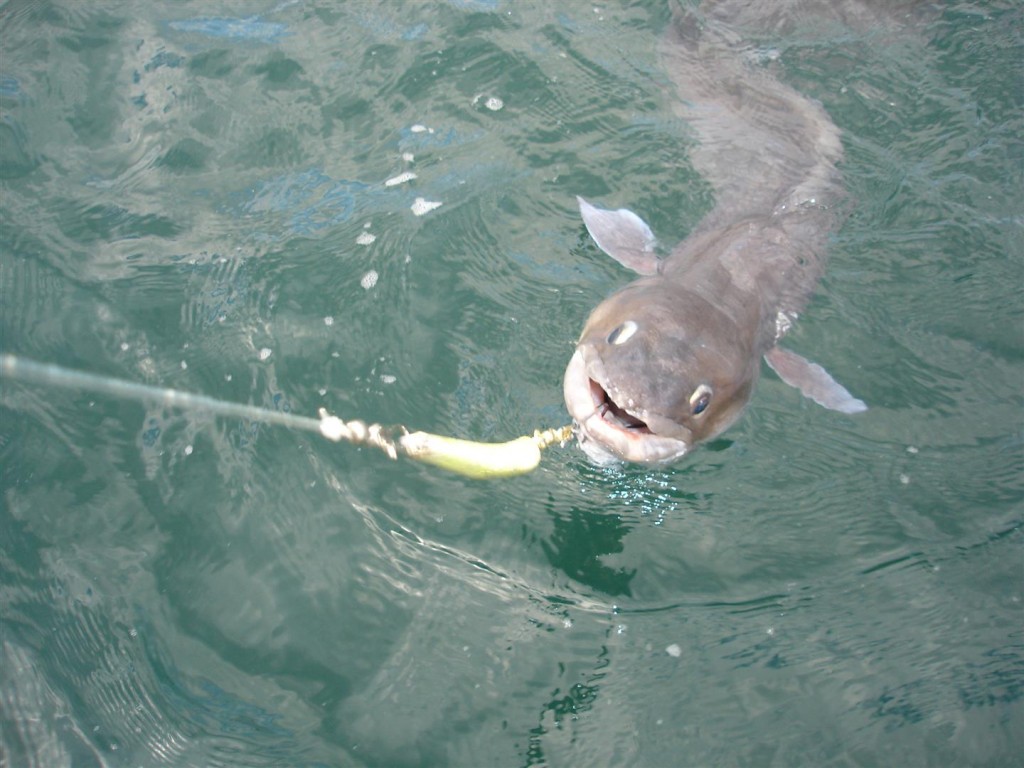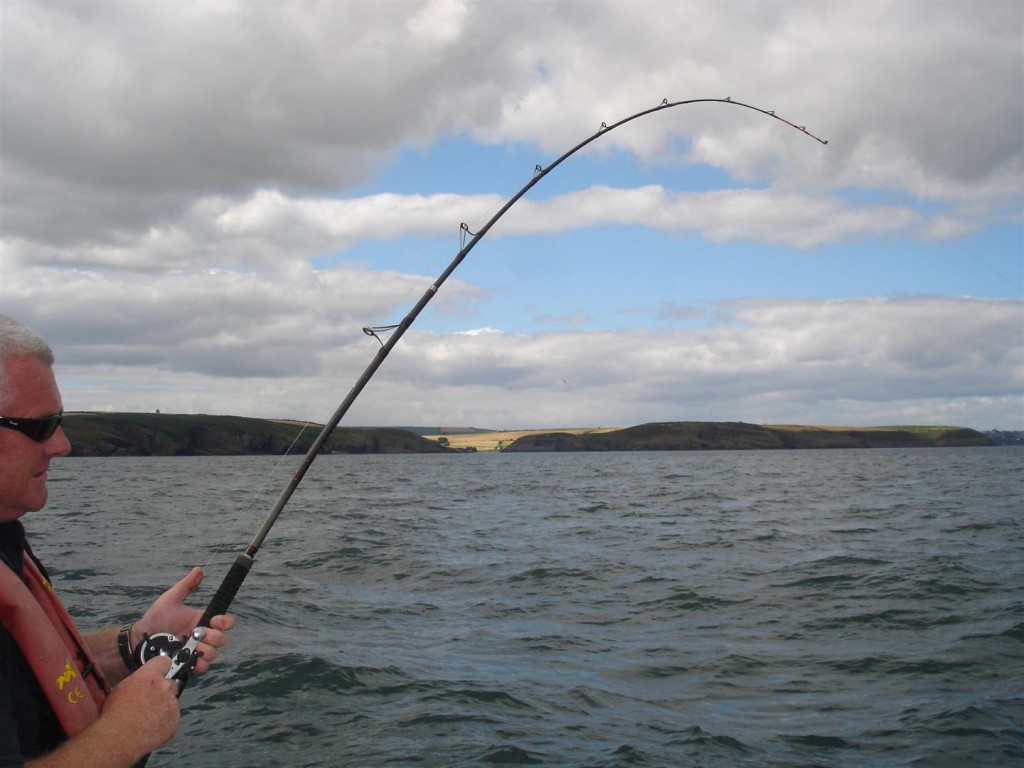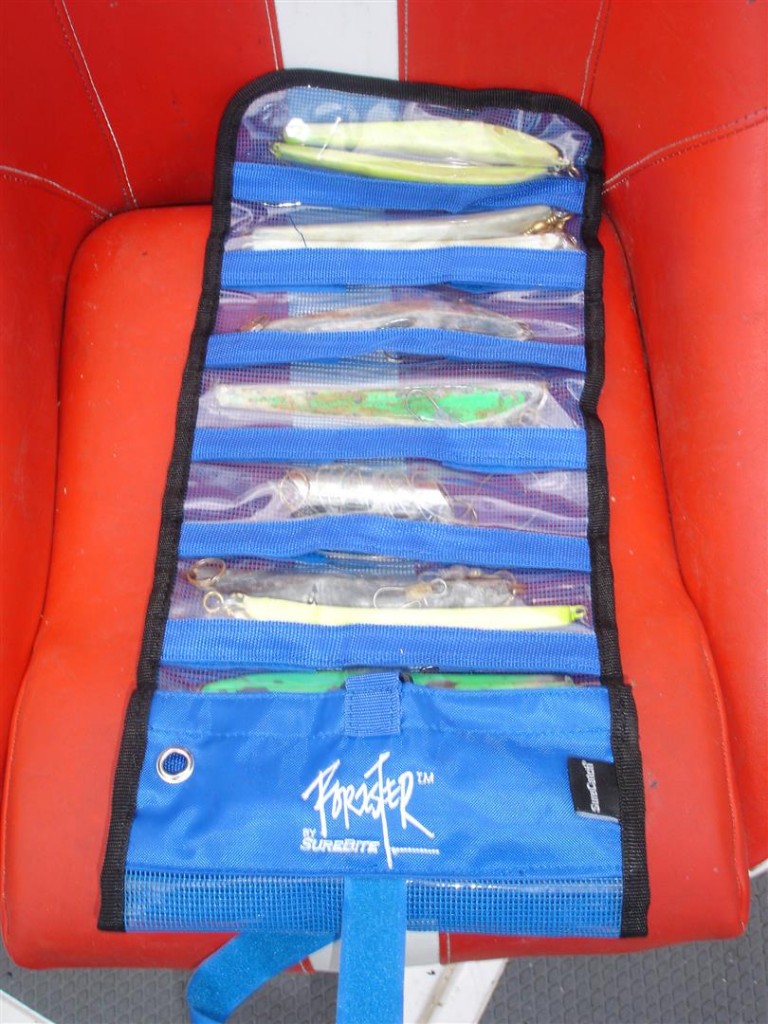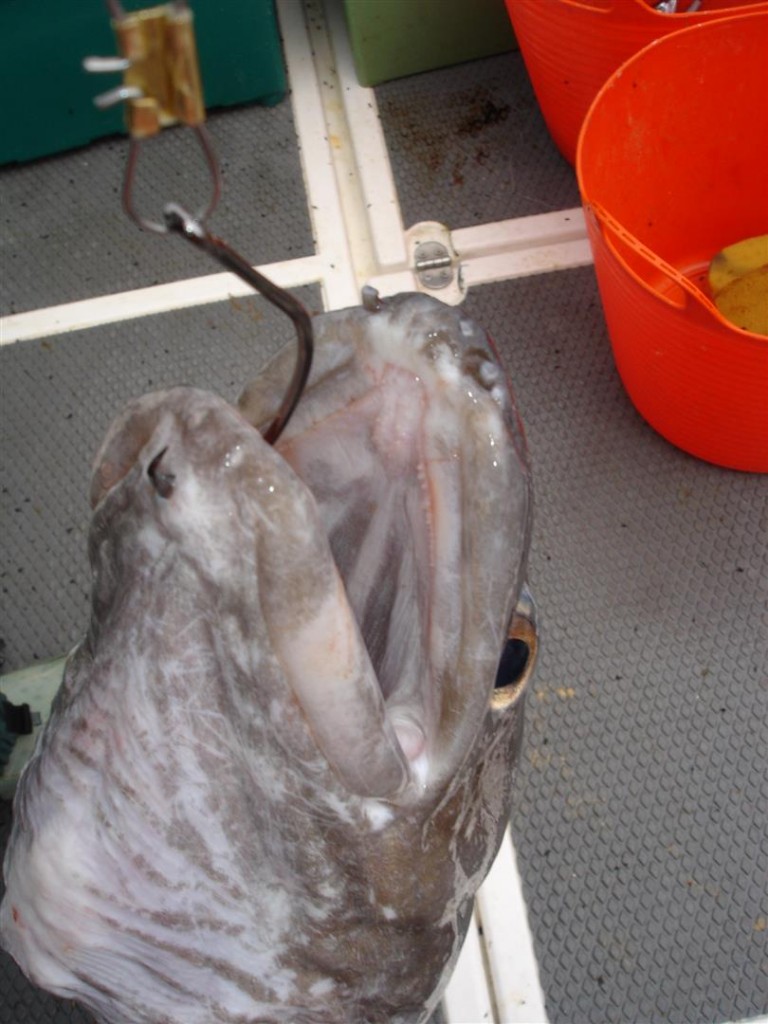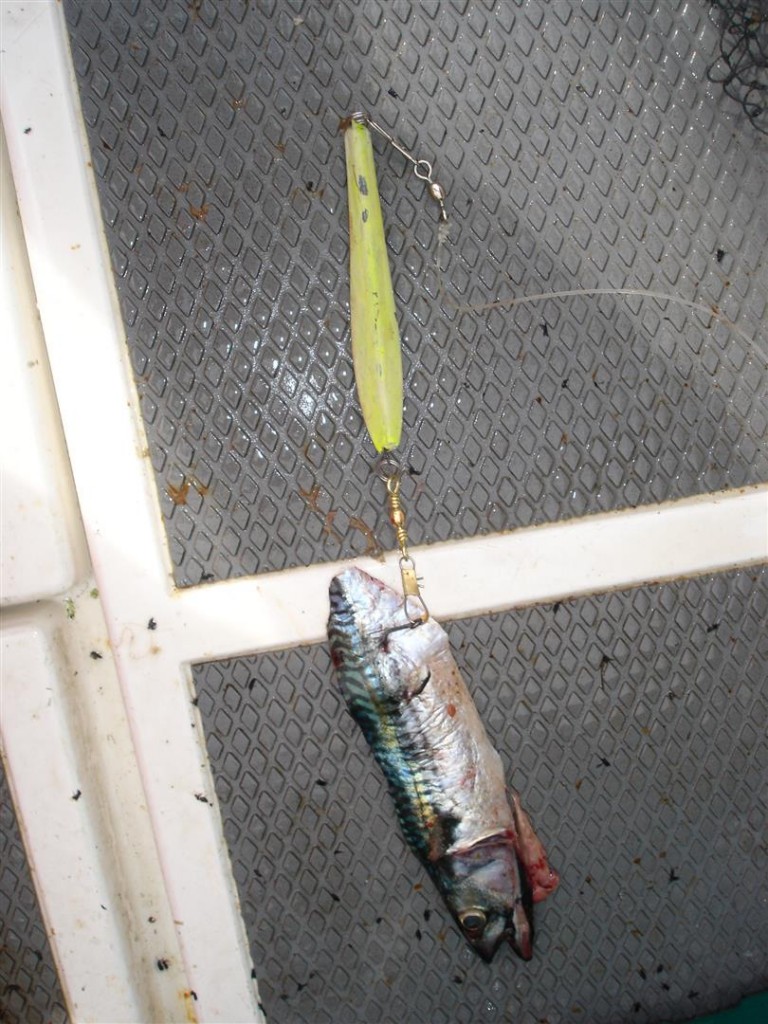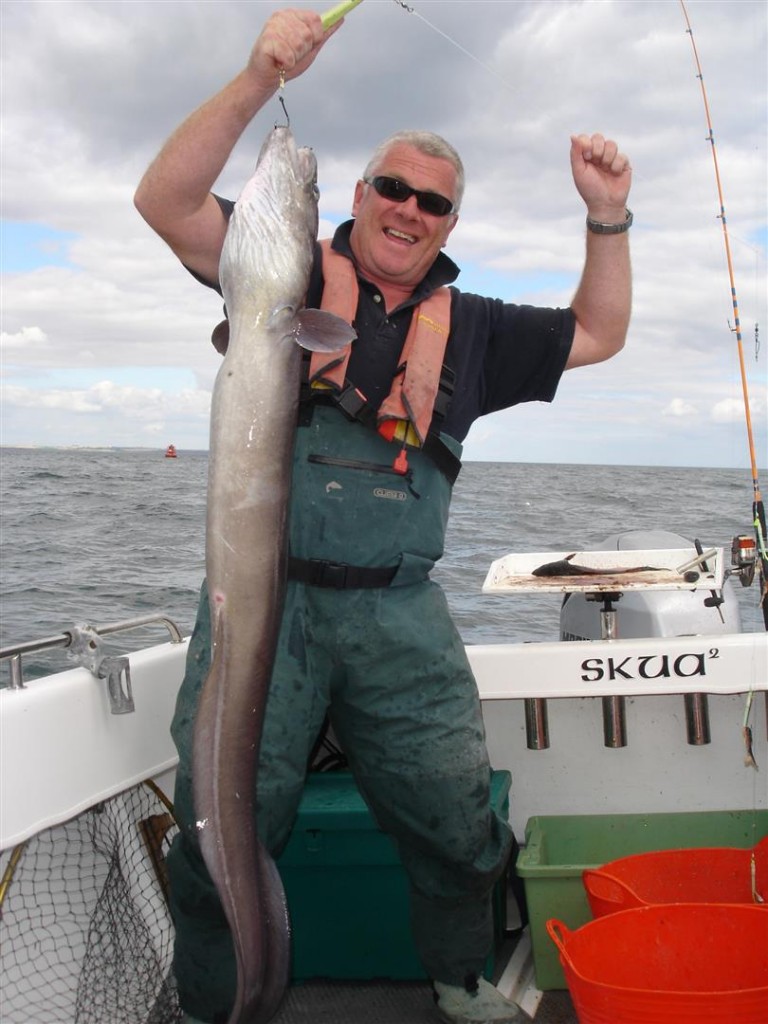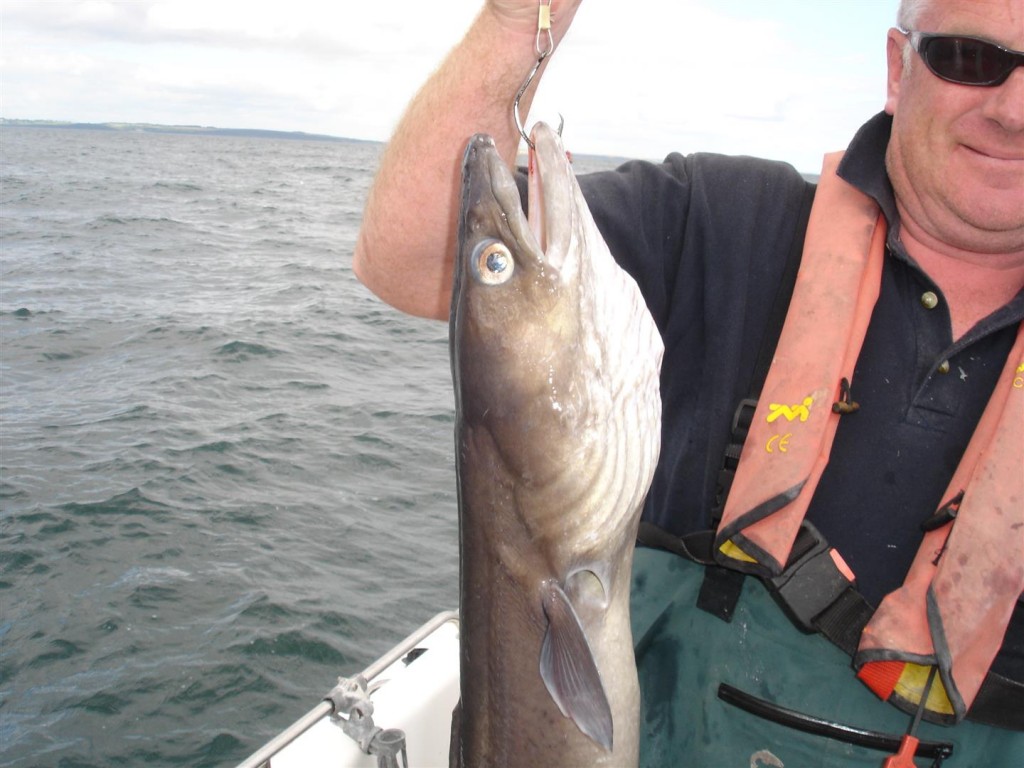The autumn seems to trigger something primeval amongst fish. It is like they know the summer is closing in and the winter looms. It is
The autumn seems to trigger something primeval amongst fish. It is like they know the summer is closing in and the winter looms. It is like they realise they have a limited time to bulk up on abundant food before the lean days of winter move in. I have always referred to this late autumn frenzy of feeding as “silly season”. I have seen wrecks come alive with competitive ling at this time of year. I have seen packs of marauding bass nearly beach themselves as they gorge on baitfish. It is a fabulous time of the year to be fishing. I have the impression that conger eels get more aggressive and competitive and snap up all before them during the silly season. All before them for congers does not normally mean mackerel. When you think of it the chances of a conger eel catching a mackerel are slim. Their diet is more of the smaller fish that inhabit reefs and wrecks – the wrasse, pouting, poor cod, squid and even whiting. Yet the greatest bait for conger eel remains a fillet of the freshest mackerel, I have never seen another bait out fish mackerel on any session. So you can take it that the recipe for successful conger fishing is location, strong tackle and fresh bait. As with all fishing it is not a simple as it sounds but it is well worth a go over the next couple of months before the eels get lethargic as the water cools down over the winter months.
Danny Kane has a hankering for conger. In September he will be fishing the Cobh International fishing competition. This is a charter boat competition and the fishing will mainly be done at anchor over reefs. Congers will make up a sizeable portion of the catches so it is important to be “on your game”. While I enjoy a good conger session I had little chance during the summer to target eels. Rest assured that it is easy to miss bites and loose congers on the strike when you are not used to catching; so with the Cork Small Boats Festival looming it is just as important for me to have my eye-in on conger fishing. Our trip turned into somewhat of an expedition. We arranged to meet up on the water with some French anglers who were staying at the Bella Vista in Cobh. They wanted to get to grips with some big pollack using their soft lures and we decided to visit some reefs. After that Danny and myself would get to grips with some conger. So the expedition began with four Warriors speeding to sea, it was an impressive sight on a beautiful morning! We located the reefs and began to hassle pollack on soft plastics and jellys. Our minds were more on congers so after a few drifts we headed for yet another reef this time our quarry would be conger. We anchored uptide of the reef. Danny fed out rope as I watched the gps and sounder. We wanted to be as precise as we could. We wanted the boat positioned so our baits would reach the edge of the reef. As the congers left their lairs and headed in search for food we wanted our bait to be the first thing they encountered.
Once the boat settled we set about getting our tackle organised and get fishing. Danny opted for a 12-20lb Penn rod coupled with a stylish Avet MX loaded with 30lb braid. This outfit will handle most conger. We expect to catch the odd fish here over thirty pounds while the majority will be in the twenties with the odd strap conger thrown in for good measure. I am not sure what constitutes a strap conger elsewhere but anything under ten pounds would be a strap on SKUA. I had been looking forward to testing a new rod on this trip. I recently picked up a Jaxon Eternum mutli-tip rod. I was looking for an alternative to the standard 12-20 rods and this rod looked like it could fit the bill. It is described as a jigging rod and it comes with three tips – as you expect a light a medium and a heavy tip. I have been using the rod while drift fishing using the light tip and it is a joy to use. It is not an ultra light rod, it has substantial power in the mid section, but with the light tip it is very responsive. At eight feet it is long enough to flick away baits from the boat and at less than one hundred Euro it will not break the bank. In fact I would think that it would be an excellent option for the angler who only goes afloat occasionally. Using the three tips you can get the most out of any species that swims in our waters. I was testing, not being lazy, so I left the light tip on in order to see how the rod would deal with a good conger! I opted for a Penn 525 loaded with 30lb Ecofibre braid as mainline. We were ready to rock and now all we needed was the terminal tackle.
You will find that there is much debate as to the best terminal tackle for catching congers. While many charters skippers will extol the virtues of mono legers you will find the most successful conger catchers down this way are using a baited pirk attached to a paternoster of some description. A few years ago I compared results of leger against baited pirk and the pirk won out hands down because of a number of factors, many apart from its catching qualities. The ease of handling fish when using the pirk method is probably its single greatest attribute. Storing pirks has always been an issue for boat anglers. I have seen guys hang their pirks off the rim of a bucket or store them in Tupperware boxes. I think Surecatch have the problem cracked with a magnificent tool – a Jig Wallet! This is a well thought out piece of kit. There are ten pockets which will store a pair of pirks at least and each pocket closes with Velcro. When full the wallet will roll up and there is a nifty velcro closing strap. I love when somebody comes up with a decent answer to an age old problem and when one like this comes along at around twelve quid you wonder why it was not thought of all along. My wallet was the source of much banter when I produced it from the locker and rolled my pirks out on the seat to make my selection. I could hear envious murmurings and accusations like “tackle tart” all followed by “where can I get some”!
My terminal tackle for congers has changed little over many years of conger fishing. I take a standard wrecking paternoster made from 100lb mono and to this I attach my pirk. I will use either the shiny chrome pipe type or a homemade Norwegian lead pirk that has been painted and varnished. I have caught many congers on the plain lead variety as well. At the business end of the pirk I use a 12mm split ring and onto the ring I connect a 4/0 heavy duty snap swivel. My choice of hook is usually an O’Shaughnessy 8/0 but this time round I decided to try a Sakuma 8/0 Circle hook. I have never used circle hooks for conger fishing but as soon as I saw the Sakuma hooks I knew I just had to try them out, they look so strong. I often heard anglers talk about the hooking effectiveness of circle hooks so it was best to try them out for myself and anyone else out there that is curious. If you are using a snap swivel to attach the hook to the pirk make sure that you take a pliers and lock the snap swivel closed. I have lost a few fish due to the swivel opening during the fight. I now find that a quick crimp with a pliers and the chances of the swivel loosening is lessened. Of course crimping the swivel causes me another problem and this has to do with bait presentation.
I have already said that I rate fresh mackerel as the best bait for congers. This makes a conger session an easy choice when mackerel are plentiful. We had caught our quota before heading for our reef. We did have to do some searching before we hit a shoal as the offshore breeze tends to push the mackerel away from the shore to deeper waters. We kept the bait out of the sun until we were ready to tackle the eels. I like to use a whole half fillet including half the head, the head being filled with blood and scent. I hook this mid ways on the fillet. Usually I would use the snap swivel to hold the fillet up the hook shank to prevent the bait bunching around the hook gape. Now that I am crimping the swivel I use a piece of bait elastic to hold the bait straight. When fishing with an upper paternoster hook I will put a smaller bait on this 8/0. You could just fish the pirk attached to a heavy mono leader but if the eel manages to strip the main hook on the pirk it will often come back for the upper hook. Once I bait up I flick the whole trace over the side in the direction of the tide. Once the rig touches bottom I will put my rod in a rod holder and settle back. Some anglers like to put down a bag of rubby dubby to attract the fish. It may encourage faster bites but realistically I have rarely found the need. If the fish are present and are in feeding humour you will not have to wait long for a bit of interest.
You have a great chance of catching congers at all stages of tide. Slack water is probably the time when you want to take a sandwich break. By far my favourite tide is an inward rushing spring tide. The movement in the water gets the eels out and scavenging and in the right mark the action can be at its best. Danny and me were fishing such a tide but we were fishing a mark that I had never fished before. If it worked out well it would be a useful mark in the future and as we anchored on the mark we could see the classic sounder picture of the rocky bottom we were looking for. Within ten minutes I had a tap on my rod and I whipped it out of the holder and waited. Congers can be incredibly aggressive on the bite. On other days the bite can seem as a poor cod plucking at your bait. Sometimes they will take and run and sometimes they will lie on the bait on the bottom. This cozying up to the bait is one of the reasons that every few minutes I will raise my bait off the bottom and lie it back down. This action also lets you know that your trace is fishing rather than stuck. As I stood there I was delighted with the detection of the Jaxon Eternum. I gently lifted my trace and immediately could tell that the culprit was a doggy who was intent of wolfing down my fillet and my 8/0. After I got rid of the nuisance and rebaited it was a matter of minutes before I felt the familiar knock-knock of a conger. I did what I have been doing for years – wind the rod tip down to the water, lift slowly, when I felt resistance and another bite I lifted strongly into the fish – then the fun begins.
Congers will give a great fight. The fight is a succession of lunges that will go on from bottom to surface. A big fish will put manners on you; a strap will cause you no end of trouble. I dealt with a strap conger and rebaited quickly. The next bite was what I was waiting for. I lifted into the fish and immediately had to hold on as the fish headed for the safety of its rocky lair. No point in leaving the fish get there though as it will anchor itself in the rocks making life tough for both angler and fish. No, it is pump and grind, pump and grind, until the fish hits the surface. The only break you get is while the fish strips line hand heads back down again. It is a great craic while the fight lasts. When the fish hits the surface is when the novice conger angler has the dawning realisation: “what am I going to do with that”- “that” is five feet of muscle with and angry looking head and an impressive set of jaws and the ability to spin around so fast it would make you dizzy.
Conger handling is an art in itself. The norm is that you just want to release the fish as quickly as possible. It couldn’t be easier for a pirk-caught fish; simply grab the pirk, while watching the upper hooks, using a t-bar and the pirk use the weight of the fish to release the hook. Stand back and watch the greatest show of contempt an angler can see as the angry eel turns and with a slap of the tail heads for the bottom – it is magical power from a fish. Taking the fish on board for a photo is a different matter. Again the pirk will be a help here. I like to hoist the fish in over the gunnels maybe using the net as a safety if the fish is very big and I want to get it to the scales, beware though, many a landing net has succumbed to the trashing of a conger eel. You can see from the pictures the ease with which I am holding the pirk caught conger, far easier than a leger caught fish.
That day wasn’t the greatest conger session I could hope to have. For me it is a trip to the wrecks and deep water that will satisfy my lust for a tussle. But you can see that where there is rock there are congers and there will always be some bruisers there. By trying different marks you might eventually locate that most elusive of beasts – the 40lb specimen.


